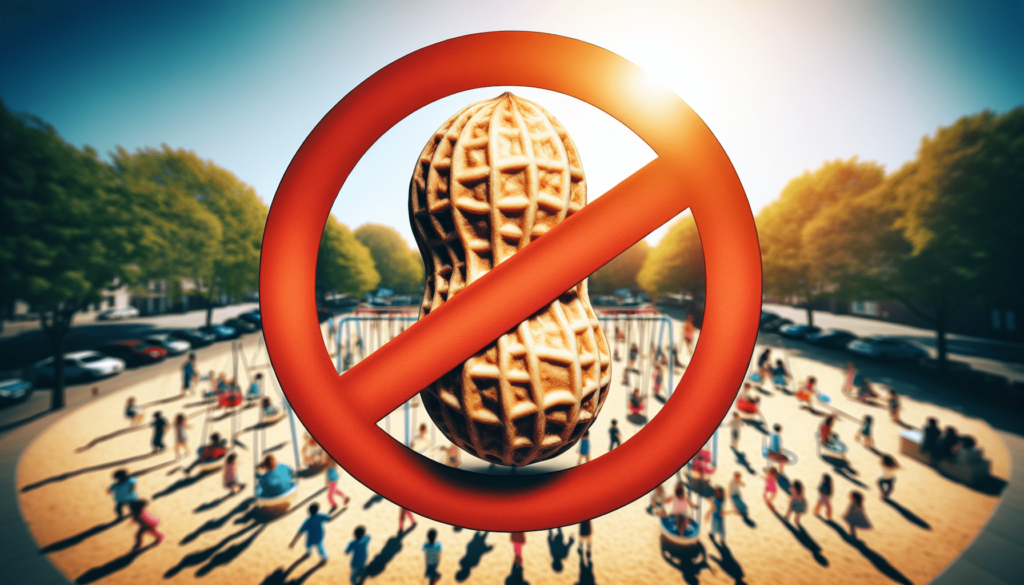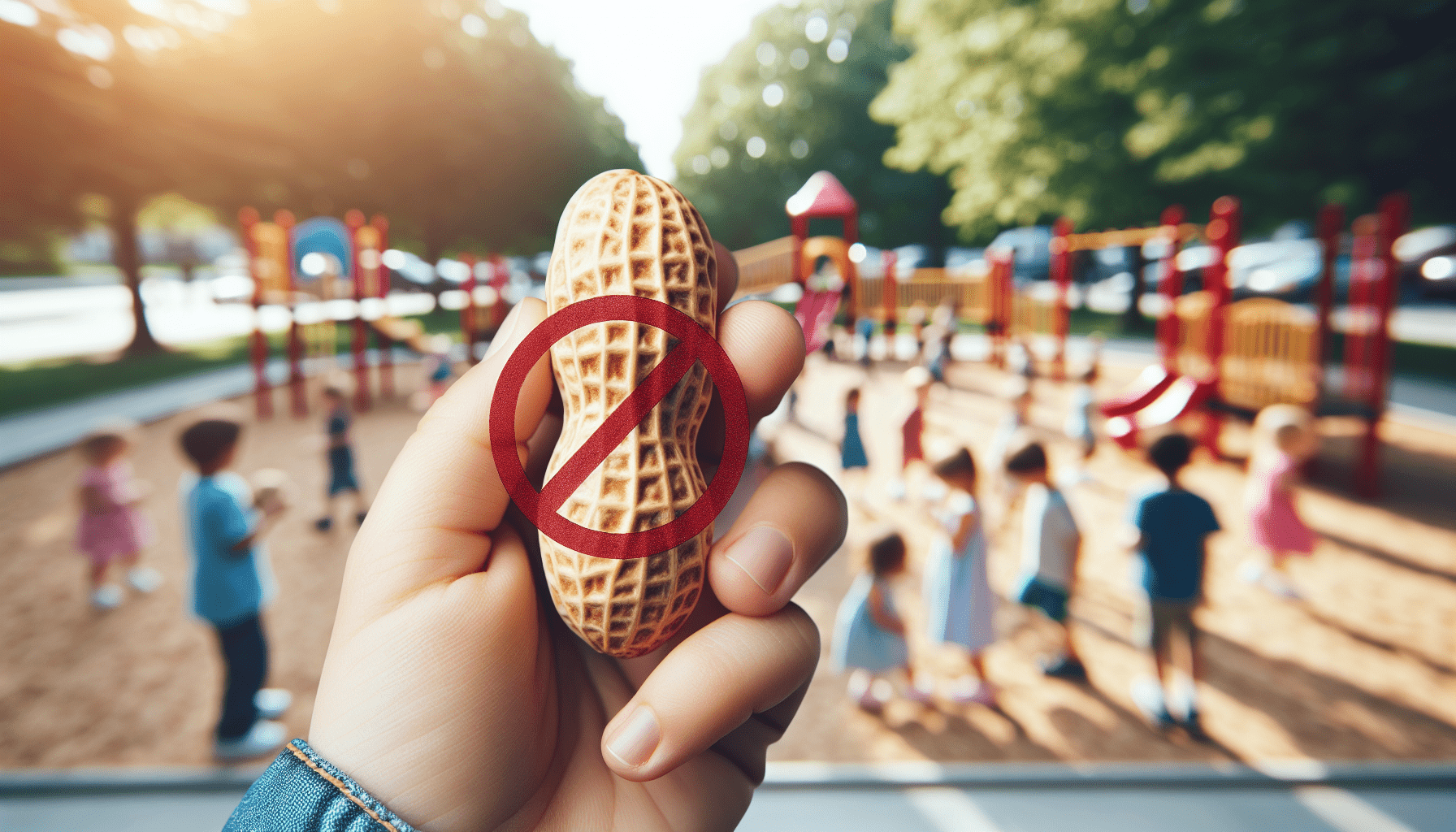Have you ever worried about managing your child’s allergies while out and about? Conveniences like eating at a restaurant, participating in events, or even going to parks can become challenging when you need to be vigilant about allergens. Understanding and preparing for these situations can help you navigate public spaces confidently, ensuring your child’s safety and comfort.
Understanding Child Allergies
What Are Allergies?
Allergies occur when your child’s immune system reacts to substances (allergens) it considers harmful. These allergens can be anything from food items to environmental factors like pollen, dust, or pet dander. Common symptoms include sneezing, itching, swelling, and in severe cases, anaphylaxis.
Common Allergens
Understanding common allergens is crucial. The table below lists typical allergens:
| Allergen | Examples |
|---|---|
| Food | Peanuts, Tree nuts, Milk, Eggs, Soy |
| Environmental | Pollen, Dust mites, Mold |
| Animal | Pet dander, Bee stings |
| Chemicals | Fragrances, Cleaning products |
Identifying Your Child’s Allergens
A proper diagnosis usually involves skin tests, blood tests, or food elimination diets. Always consult your allergist or pediatrician to pinpoint the exact allergens your child is sensitive to.
Preparing for Public Places
Essential Preparations
Taking precautions begins with preparation. You always need to be a step ahead to prevent accidental exposure. Here are a few preparatory steps:
- Medical Kit: Always carry a portable medical kit containing antihistamines, an epinephrine auto-injector (EpiPen), and any other medications your child requires.
- Allergy Bracelet: Have your child wear an allergy bracelet that lists their specific allergens and emergency contact information.
- Written Plan: Have a written action plan that details the steps to take in case of an allergic reaction. Ensure it is easily accessible to anyone caring for your child.
Educating Your Child
Teach your child about their allergies, the importance of avoiding allergens, and how to recognize symptoms of an allergic reaction. This education empowers them to make safer decisions and informs them about seeking help when necessary.

Navigating Public Spaces
Restaurants
Eating out can be tricky, but not impossible. Here are some tips:
- Research Ahead: Look for allergy-friendly restaurants. Many have detailed menus or allergy warnings.
- Communicate: Inform the staff about your child’s allergies. Ask how meals are prepared and if cross-contamination is possible.
- Carry Food: If in doubt, bring a safe meal for your child. Some restaurants may even agree to heat it for you.
Parks and Playgrounds
Outdoor activities present unique challenges. Pollen, insect bites, and contact allergens can be concerns. Here’s what you can do:
- Timing: Visit parks during times when pollen levels are lower, such as late afternoon.
- Insect Repellent: Use a child-safe insect repellent to prevent stings or bites.
- Supervision: Always keep a close eye on your child to prevent them from touching or ingesting unknown substances.
Schools and Daycare Centers
Educational settings require a well-coordinated approach. Work closely with teachers, school nurses, and other staff:
- Information Sharing: Provide detailed information about your child’s allergies, symptoms, and emergency procedures.
- Policies: Familiarize yourself with the school’s allergy management policies. Engage in discussions with staff to ensure they are adequate.
- Food Safety: Create a plan for safe snacks and meals. Discuss the importance of your child avoiding food sharing with others.
Public Events and Gatherings
Birthday parties, fairs, and other events require meticulous planning:
- Host Communication: Discuss your child’s allergies with event hosts beforehand. They may accommodate your needs by avoiding certain foods or making special arrangements.
- Bring Supplies: Carry safe snacks and your medical kit. Be prepared to excuse your child from activities involving allergens if necessary.
- Stay Informed: Learn about the layout and potential allergen spots at the event. Have a quick exit plan if an allergic reaction occurs.
Handling Allergic Reactions
Immediate Actions
Despite the best precautions, reactions can still occur. Knowing what to do immediately is crucial:
- Identify Symptoms: Understand the early signs of an allergic reaction—hives, swelling, breathing difficulties, or gastrointestinal issues.
- Administer Medication: Follow your emergency action plan. Administer antihistamines for mild reactions and an EpiPen for severe reactions.
- Seek Medical Help: Call emergency services if necessary. Inform them about the allergen exposure and the medications administered.
Post-Reaction Follow-Up
Once the immediate danger is over, follow up:
- Hospital Visit: A visit to the emergency room might be required for further observation and treatment.
- Allergen Review: Take note of the incident. Review what triggered the reaction and how it was handled.
- Plan Adjustment: Adjust your action plan if needed. Consider discussing additional preventive measures with your allergist.

Educating Others
Family and Friends
Ensure that everyone in your circle understands the importance of managing your child’s allergies:
- Information Sessions: Hold informal sessions to inform them about your child’s specific allergens, symptoms, and emergency procedures.
- Resource Provision: Provide family members and friends with literature or online resources about allergy management.
Community Awareness
Raising awareness beyond your immediate circle can also help create a safer environment:
- Advocacy: Advocate for clear allergen labeling in community cafes, restaurants, and events.
- Community Programs: Participate in or organize community programs focused on allergy awareness and education.
Partnering with Schools
Encourage your child’s school to adopt or improve allergy policies:
- Workshops: Offer to conduct workshops for teachers and staff about recognizing and managing allergic reactions.
- Policy Collaboration: Partner with school administration to create comprehensive allergy management policies that include training, emergency plans, and access to medications like EpiPens.
Dietary Management
Pack Your Own Meals
Bringing your own meals can be the safest option when venturing into public places. Here’s how to make it easy:
- Meal Prep: Prepare meals in advance and store them in portable, easy-to-carry containers.
- Labeling: Label your child’s food clearly to avoid any mix-ups, especially during shared meal times.
Reading Food Labels
Reading food labels is a skill that can protect your child from accidental allergen exposure. Always check the ingredient list and look for potential cross-contamination warnings.
Allergy-Free Substitutes
Finding allergy-free substitutes can make meal planning easier and ensure that your child doesn’t miss out on their favorite foods:
- Dairy Alternatives: Almond milk, coconut milk, and soy milk can replace cow’s milk.
- Gluten-Free Options: Products made from rice, corn, or quinoa are excellent gluten substitutes.
- Nut-Free Butters: Sunflower seed butter and soy butter are ideal replacements for peanut or tree nut butter.
Mental and Emotional Support
Supporting Your Child
Living with allergies can be stressful for a child. Emotional support is just as important as managing the physical aspects:
- Open Conversations: Regularly talk with your child about their feelings and anxieties related to their allergies.
- Counseling: Consider professional counseling if your child shows signs of severe anxiety or depression due to their allergies.
Supporting Yourself
Caring for a child with allergies can also take a toll on parents. Here’s how to manage:
- Join Support Groups: Online or local support groups can offer advice, share experiences, and provide emotional support.
- Self-Care: Don’t neglect your own well-being. Take time to relax and recharge to avoid burnout.
Legal and Advocacy Resources
Understanding Your Rights
Knowing your legal rights is essential for ensuring that public places accommodate your child’s allergies:
- Disability Laws: Familiarize yourself with laws such as the Americans with Disabilities Act (ADA), which can provide protection and accommodations.
- Educational Rights: The Individualized Education Program (IEP) and 504 Plan can help create a safer school environment for your child.
Advocacy Organizations
Several organizations provide resources and support for managing allergies:
| Organization | Services Provided |
|---|---|
| Food Allergy Research & Education (FARE) | Educational materials, advocacy, and community programs |
| Asthma and Allergy Foundation of America (AAFA) | Research, education, and support resources |
| Kids With Food Allergies (KFA) | Parental support, recipes, and educational events |
Technological Aids
Apps and Devices
Technology can simplify managing your child’s allergies:
- Allergy Apps: Apps like “AllergyEats” and “Spoonful” can help you find allergy-friendly restaurants and read food labels.
- Medical Devices: Portable nebulizers and monitoring devices can be lifesavers, providing timely treatment.
Barcode Scanners
Some apps allow you to scan product barcodes to instantly check for allergens, adding an extra layer of safety while shopping.
Conclusion
Managing your child’s allergies in public places may seem daunting, but with the right knowledge and preparation, it becomes much more manageable. By understanding allergens, educating your child, and preparing meticulously, you can navigate public spaces with confidence and peace of mind. Remember, constant communication, vigilance, and support are key to ensuring your child’s safety and well-being. By taking precautions and equipping yourself with the right tools, you create a safe and inclusive world for your child.
